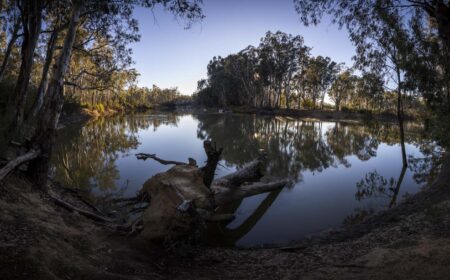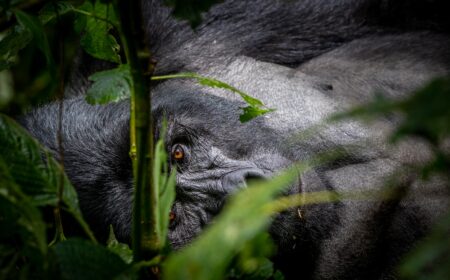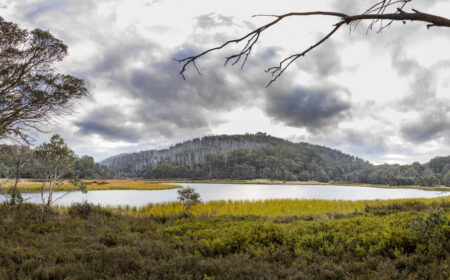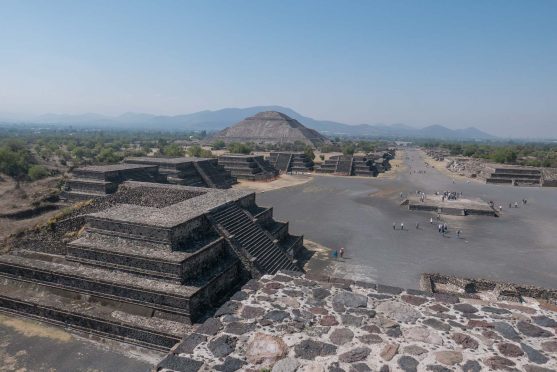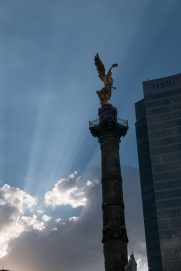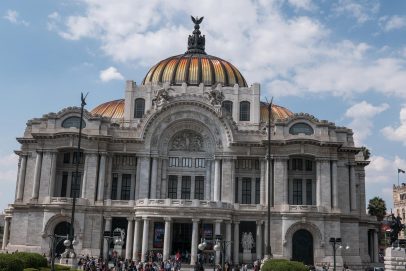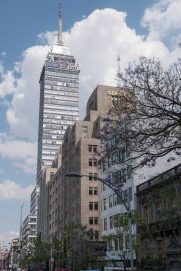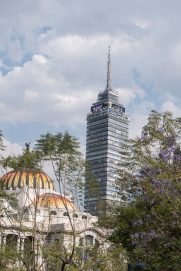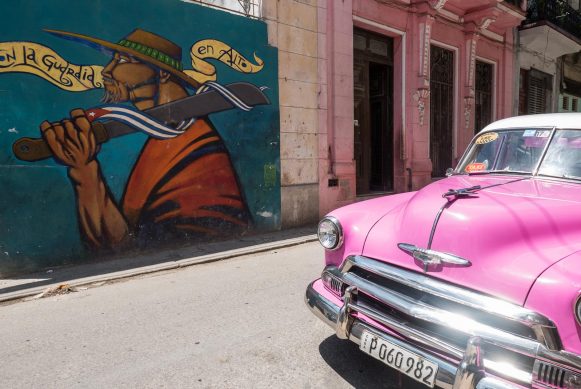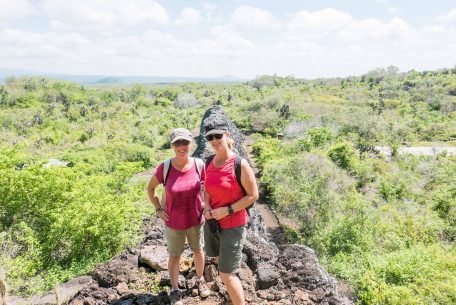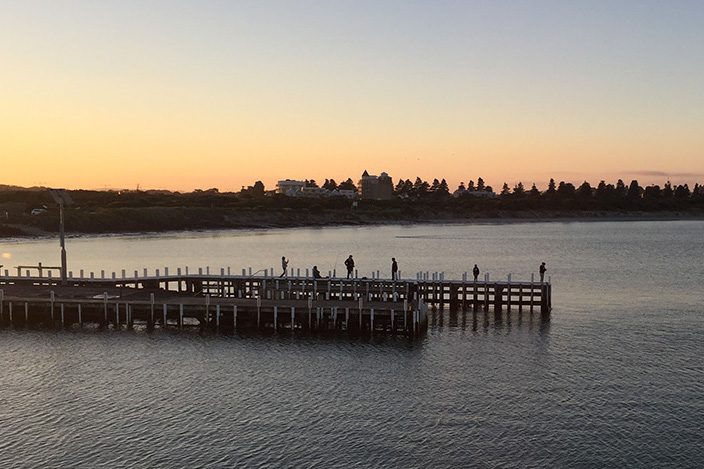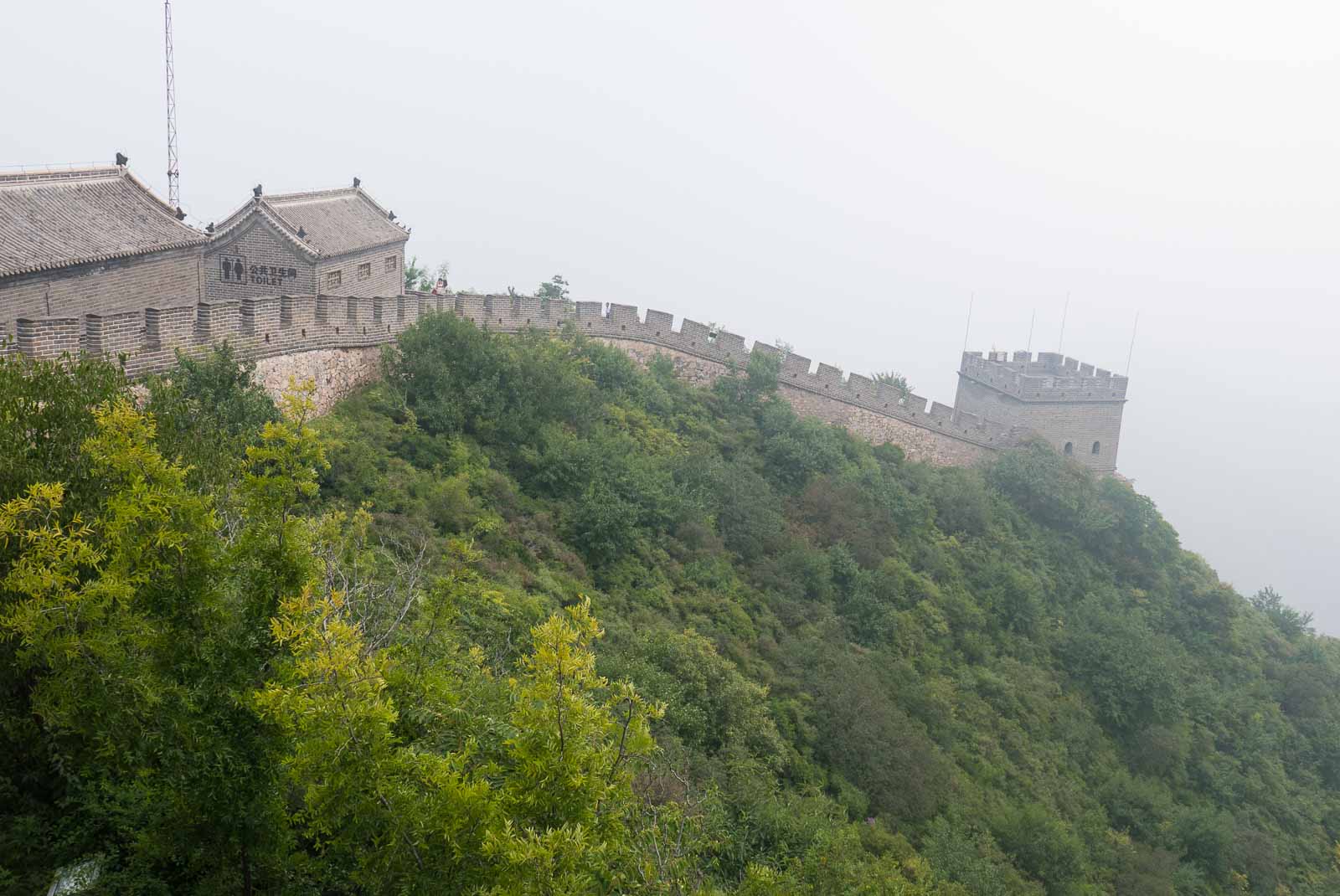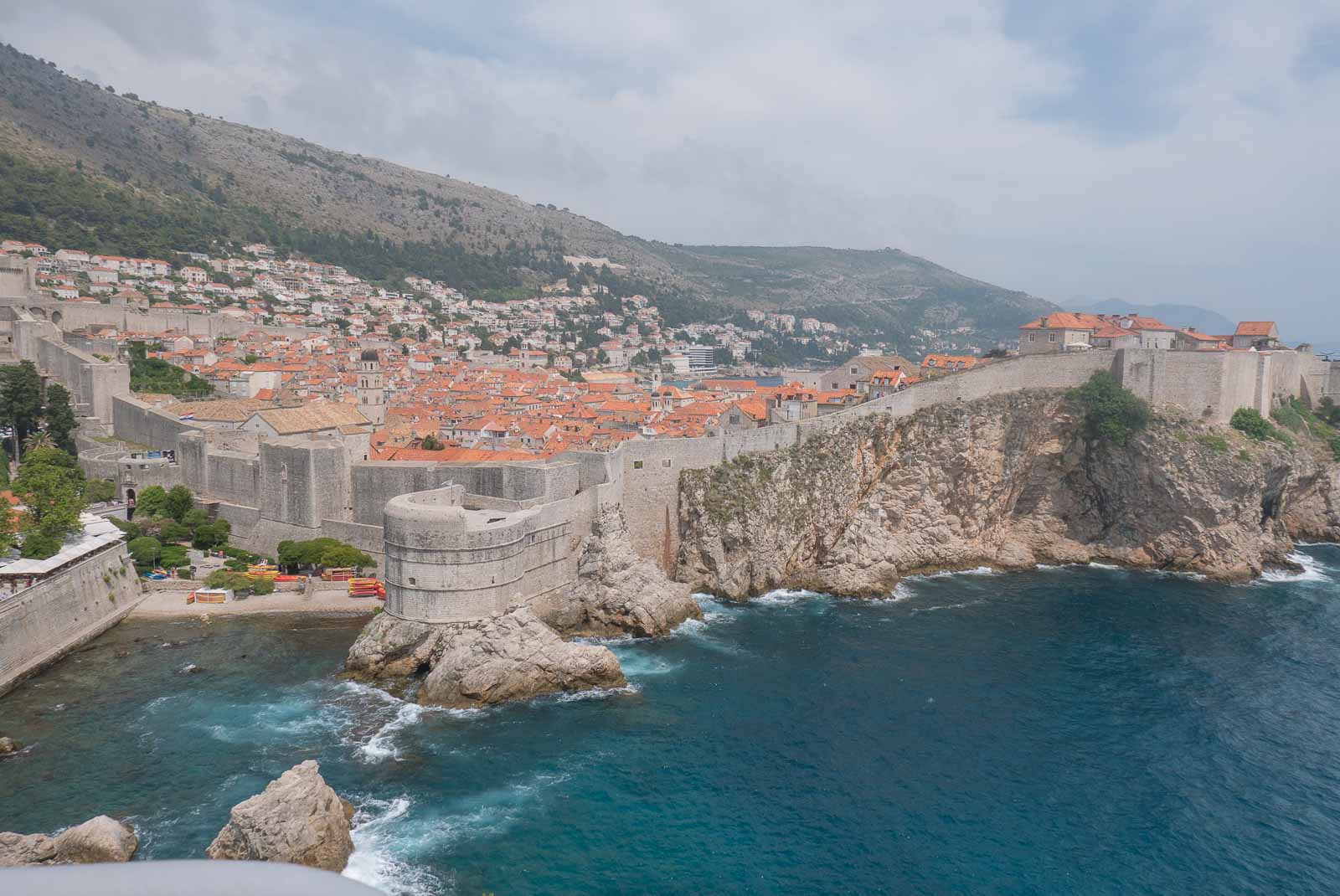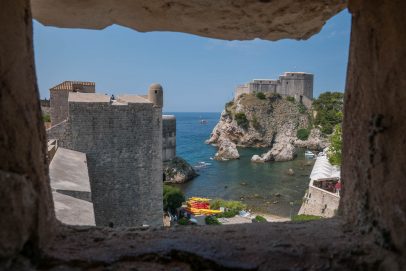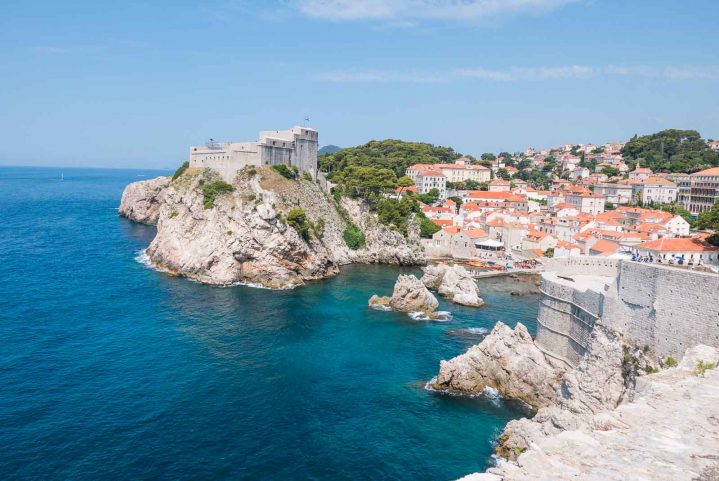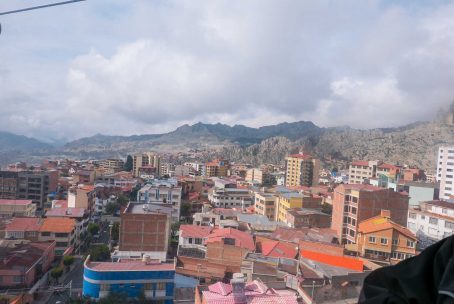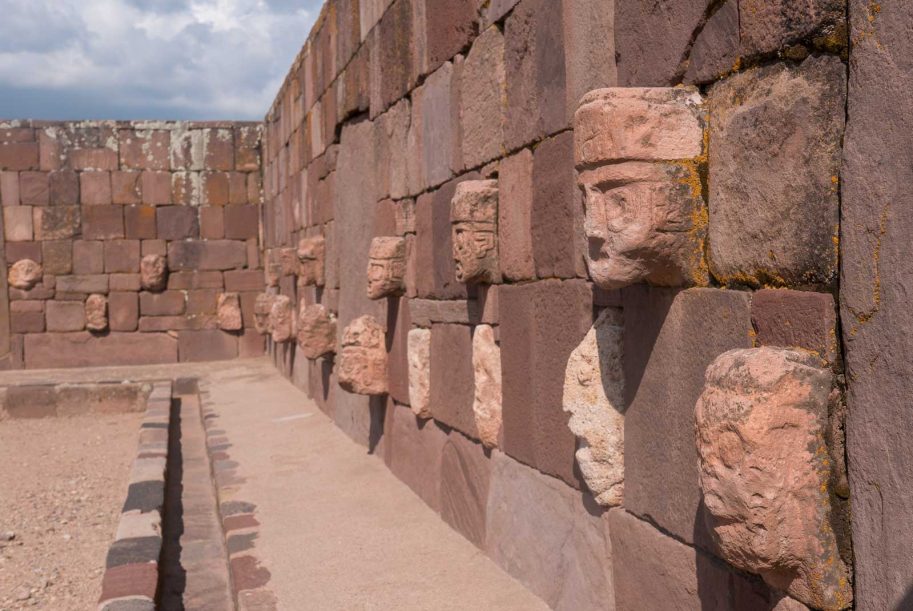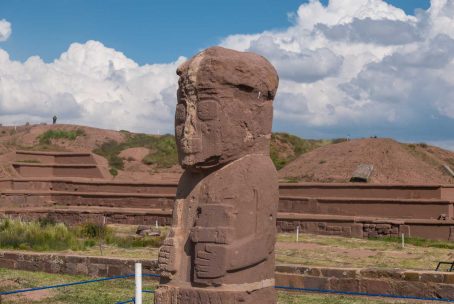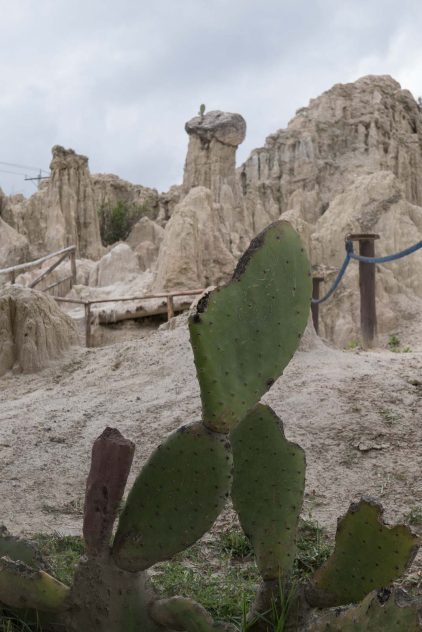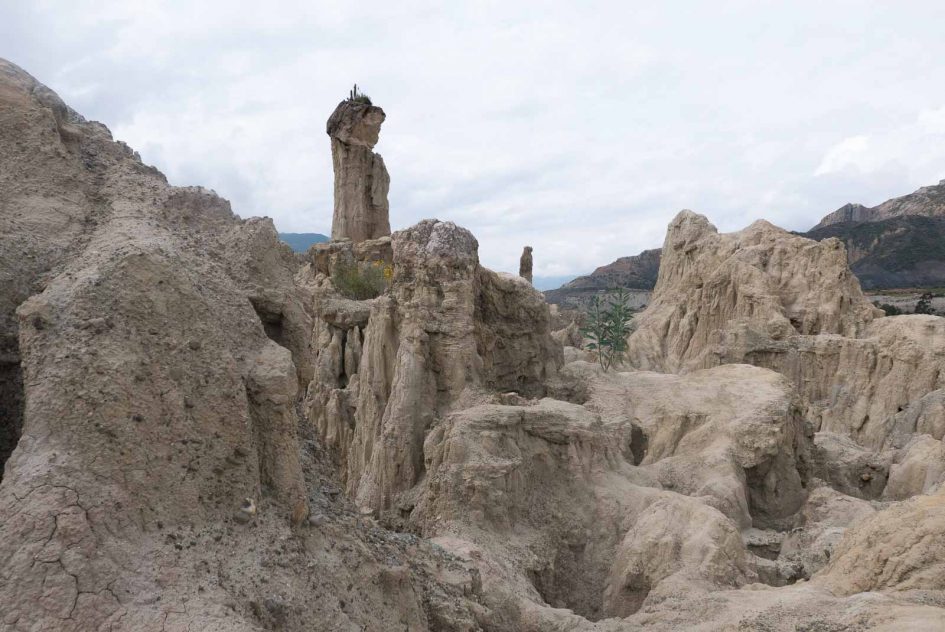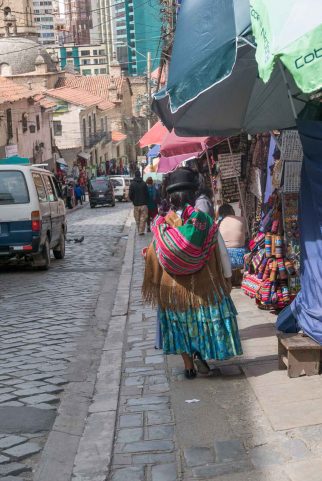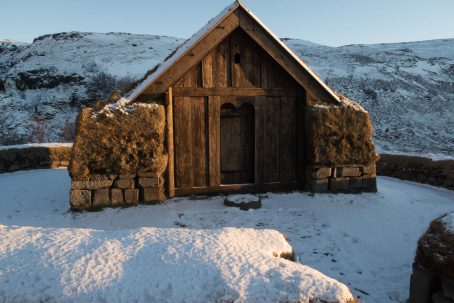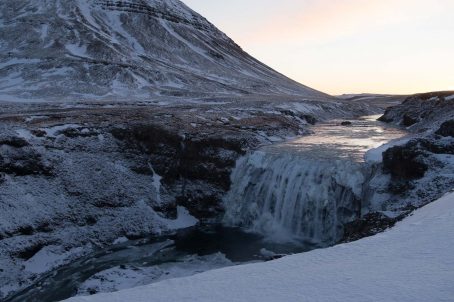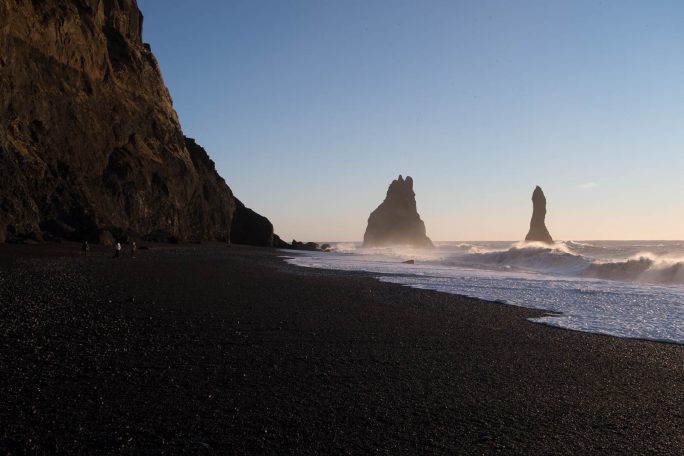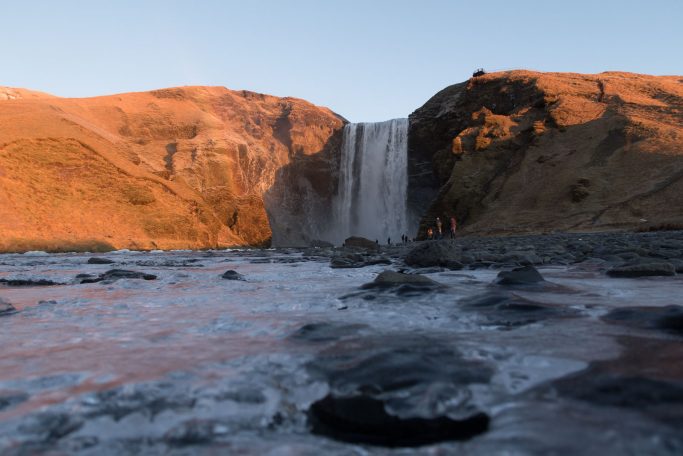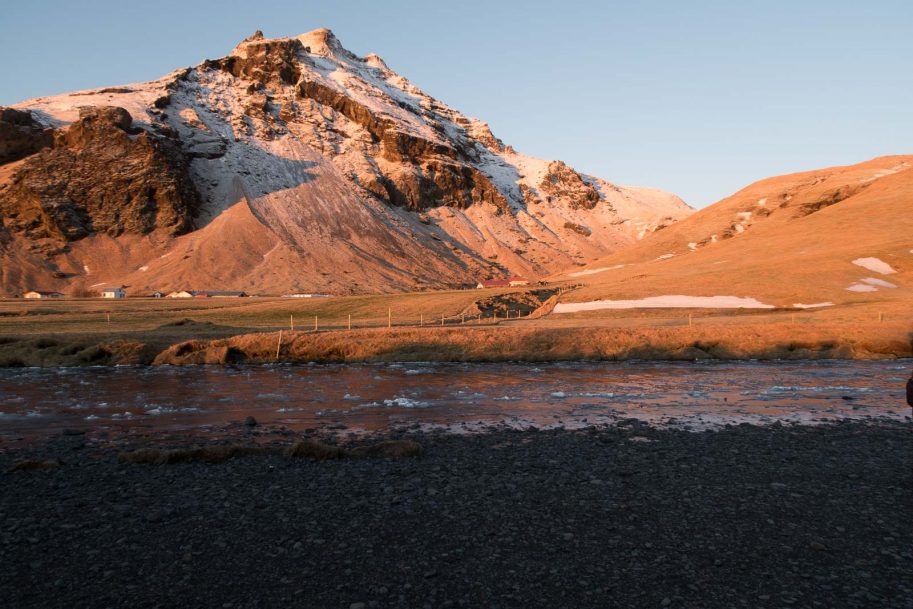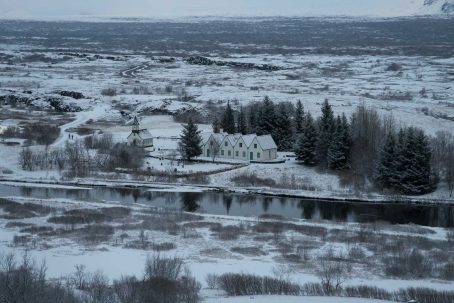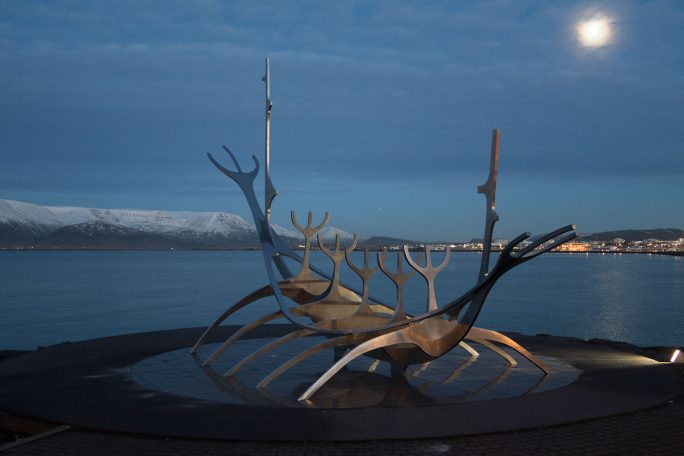The surprising allure of Mexico City
You know sometimes you go to a place, not quite sure what to expect but willing to give it a go anyway?
You get there and you’re quietly impressed. It all functions just a little bit more easily than you thought it might, the people are that bit friendlier than you expected. Not that you had any real expectations, at least, you didn’t think you did. But now that you’re there, you kind of realise, maybe you did.
This was my sense of Mexico City.
I turned up in Mexico to host a tour with Two’s a Crowd. The tour was sandwiched between a South American tour – think Peru, Bolivia and Ecuador– and Cuba.
Mexico was up against some amazing experiences, Machu Picchu, the Amazon jungle, the Galapagos Islands and then, well, you know, CUBA. How could it possibly compete?
But here’s the thing about Mexico. Somehow it quietly gets under your skin. And when I say quietly, I actually mean at high volume. Our guide, Balam, warned me at the start of our tour that the country seems to be on steroids, everything is over the top – he said. From the music, to the colours and the street odours and the food spices, everything is turned up a notch.
“I think Mexicans are afraid of being bored, or worried that life might be dull,” he’d said.
“So we amp everything up.”
But the thing with Mexico is that it’s anything but dull.
And at the centre of it all, is Mexico City. There’s a saying, “if it happens in Mexico, it happens in Mexico City”.
The city is a beautiful mix of modern architecture and rich colonial history. Mexico City was founded by the Aztecs in 1325, and the rich Spanish, Mayan, Oltec, Zapotec and Aztec influence is still evident throughout Mexico. And in the capital, historical monuments and palaces sit side by side with new state of the art skyscrapers – most of which have been built to resist the earthquakes the city is susceptible to.
Our tour starts with a visit to the pyramids at Teotihuacan.
About an hour and a half drive from the city centre, Teotihuacan is a UNESCO World Heritage listed site, built around 100 BC as part of a large ancient city. The sites are well preserved and offer a fascinating glimpse into the history of this part of the world.
We walk up the sun temple and the moon temple, getting a commanding view of what must have once been a remarkable city in its own right. We look in amazement across the Avenue of the Dead, anxious to get back down and actually walk along the wide boulevard, retracing the steps of ancient civilisations.
Our guide points out the sacrificial stone – where a community member was sacrificed to the weather Gods each year in what was said to be a great honour and then view one of the few remaining sections still covered in paint to see how the city would have looked in its heyday. In a word, vibrant.
The walk up the temples is tough, the steps and steep and high. My tip (thanks to our trusty guide, Balam) is to crisscross your way across the steps, walking on a slight angle. Trust me, the views from the top are worth the effort. It’s only from the top that you get to see the true scale of the temples and the surrounds.
The next day we are up early for a tour of Mexico City centre. I’d walked the city on my own when I arrived, getting lost along the way and taking in some of the back streets. I felt entirely comfortable and loved the sites around me. I’d stopped at a taco truck to try a traditional Mexican taco for all of $1 – well worth it.
But with my group, we stop in at the National Museum of Anthropology to learn more about the history of Mexico. Our guide walks us through a history of the Zapotec, Mayan and Aztec cultures. It’s an impressive history, but the thing about this museum is that it’s all so beautifully designed.
The building itself is stunning, and the archealogical artefacts are displayed in such a way that you are drawn in to each exhibit. Although it was built in 1964, the museum has a very modern feel to it. It’s a stunning way to display a remarkable history.
It’s perhaps not surprising the museum is impressive. Mexico City is serious about its culture. There are more museums in Mexico City than just about any other city in the world – 150, apparently.
We take a drive down Paseo de la Reforma – the main boulevard in the city centre, past the monument to Diana, the Goddess of Hunting and stop at the Angel de la Independence , which just happens to be perfectly surrounded by shards of light emanating from the sun’s position behind the few clouds in the sky.
If you have the time, it’s worth stopping to wander through the Bosque de Chapultepec (Chapultepec Forest). The grounds are said to be one of the largest city parks in the Western Hemisphere at about 1695 acres. Compare that to Central Park in New York, which is about 843 acres or Hyde Park in London at about 350 acres. There is plenty to see and do, from open air art spaces to water fountains, amusements parks and nine, yes nine museums. You could get lost in there for weeks
As soon as we have some spare time, an afternoon to wander through the city centre, we head straight for one of the Hop On Hop Off Bus stops, select a tour route and sit in open air luxury learning more about the city centre and seeing the sites from up high. Just be careful – some of the power lines here hang low, very low!
On our last night in the city our guide takes us to Plaza Garibaldi to visit a Mariachi band. We’re not disappointed, particularly when the band strikes up La Bamba and we all hum along to the one tune we know.
Like this post and want to use it for your own guided tour of Mexico City? You can now access it offline through GPSmyCity. Just go to this link to download it. For a small cost you can even download the story with GPS coordinates so you know exactly where to go! It’s kind of like having a map, a Lonely Planet guide and a travel buddy in your pocket.
(Note: If you do upgrade to the full version we will receive a small fee from the overall cost which helps us maintain this blog.)
Mexico City – Fast Facts
We stayed at Hotel Regente City
We were here for four nights.
Was it long enough? There is so much to see in Mexico City – aside from all those museums, I’d stay a lot longer – how long have you got?
Highlights: Everything! The Mariachi band, the architecture, the history…
*This was part of a tour I hosted with Australian based tour company Two’s a Crowd.
Join AllAbroad on Facebook, Twitter or Instagram for more travel chatter.
Getting to the heart and soul of Cuba in Havana
These days it seems like just about everyone wants to head to Cuba. And if they don’t actually want to go there; they’re generally a little intrigued by the country. Intrigued by the mystique, by its cool image and its, until recent times at least, ‘forbiddenness’.
So what is it about this tiny country in the Caribbean that inspires wanderlust at the mere mention of its name and is on bucket lists all over the world?
Cuba is a country of more than 11 million people in an area of almost 110,000 square kilometres.
And it’s a country with an interesting history. Before Fidel Castro and Che Guevara succeeded in bringing socialism to the country Cuba was one of the most progressive countries in the world. Prior to 1959 the country ranked fifth in the northern hemisphere in per capita income and had more television sets per person than any other northern hemisphere country.
Remnants of its wealth can still be seen in the wide boulevards and opulent homes stretching through its capital, Havana. But when socialism arrived, and with it US sanctions, the country found itself cut off from the world. Unable to trade with other nations to buy goods that generally help societies progress.
The impact years of sanctions and the Communist system of government have had on the country have left a distinct charm. It’s a cliché to say that travelling to Havana is like stepping back through the decades, but wandering through the city streets is like walking through a living museum of time.
The beauty and grace of the once opulent homes is still there if you look beneath the peeling paint and crumbling facades.
Now, the buildings are slowly getting spruced up, shops aimed specifically at tourists are opening and infrastructure is being established to cater to the expected crowds of visitors. And, the country has recently made the internet available to locals and visitors. It’s still not easy to access, drops out and you have to go to dedicated central city squares to access it, but it’s a start.
But there is a charm in Havana and the wider Cuba that spreads beyond its aesthetics. Cuba and in particular Havana have a heart and soul that’s often missing in thriving economic capitals.
You’re just as likely to encounter someone wanting to samba with you in the streets as sell you something. And everywhere you turn at lunchtime you’ll hear live music in cafes and bars, sometimes even in the streets, enticing you to, at the very least, tap those toes.
The best way to see Havana is from the back of an Old Timer, yes it’s a cliché but trust us, when you see them driving around, and you will see them driving around, they’re still the most common cars on the roads here, you’ll want to experience it too.
When Castro took charge of Cuba he apparently banned all new cars being exported into the country, which is why you see all the big old American classics on the roads.
And far from being just for the tourists (though there are a lot that are there just for sightseeing trips) locals use these cars everyday.
Havana is quite spread out and you’ll want to see the foreshore, Revolution Square, the Hotel Nacional de Cuba, which hosted an infamous mob summit in the 1940s, later referenced in the Godfather Part III and the Paseo boulevard, at one time one of the most grand streets in the world. And you’ll want to see it in style, so hire a convertible old timer if you can!
If you’re budget doesn’t stretch that far, it’s just too cheesy or you really don’t like the old classics, there are many other ways to get around. From ‘cycle rickshaws’ to coco taxis there is a myriad of transport options. The coco taxis look like bubble cars, negotiate a price and how long you want to spend sightseeing and then sit back and take in the city life.
Our driver took us down the back streets, off the tourist trail so we could take in the life and soul of the city, as well as the main streets.
When night falls you’ll want to head somewhere for a mojito, this is Cuba afterall. Make sure you head to the Buena Vista Social Club to hear the old Cuban music at its best.
The Social Club is dark, smoky, everything you’d expect from a Cuban bar and the performers will have you up dancing in no time.
Fast facts
We stayed in a Casa, a privately run bed and breakfast in Havana.
We were here for four nights.
Was it long enough? There is still so much to see in Havana. We spent eight days in Cuba and can’t wait to get back to see more.
Highlights: Cruising the streets in an Old Timer and a Coco Taxi, dancing in the streets, watching the colour and movement that is life in Cuba.
*This trip was part of a tour I hosted with solo travel company Two’s a Crowd. We travelled with Intrepid.
Join AllAbroad on Instagram, Facebook or Twitter for more travel inspiration.
Lolling like a sealion in the Galapagos Islands
The first thing that strikes me about the Galapagos Islands is the colour. The water is the bluest blue I’ve ever seen and the greens are almost fluorescent.
We’re travelling to Isabela Island, our first stop in the Galapagos Islands, from Santa Cruz and even with the swell of the waves made by our speedboat ploughing through the waters, the colour is striking.
One of my tour group members leans her head over the side, lapping up the breeze, the smell and taking in the amazing scenery around us. Her face is a vision of pure happiness. I know how she feels.
The second thing I notice about the Galapagos Islands is the animals. They’re not showy, like the wildlife in Africa, but they are just there. As our boat pulls into the marina at Isabella Island we watch and laugh as sealions loll around on boat decks, turn in the water gently in front of our boat or hoist themselves up on to abandoned boats.
And there’s more, we walk from the pier to our waiting vehicles and find ourselves stepping over iguanas. It’s April, mating season is over, so the iguanas have gone back to their dull greys – no longer needing to impress a potential partner – but still, here they are right in front of us! They lay on the footpaths unperturbed as we gingerly step around them.
The third thing I notice in the Galapagos Islands is how relaxed we all feel.
My tour group has travelled through Peru and Bolivia and finally Quito to get here. Peru and Bolivia were busy, La Paz, was a particularly manic city. And yet here we are in Ecuador, still a part of South America, and yet somehow seemingly a world away.
Isabela is the largest island within the Galapagos Islands. Our hotel is set on the beach, there is a hammock and banana lounges to help us ease into island life.
Our guide takes us for a walk into town, pointing out the local church, the Laundromat, the local store along the way. But I’m most struck by the roads which are all covered in sand.
As relaxing as all this is though, we are here to see as much as we can and that means more than just the hammocks on our doorstep.
We head out to Flamingo Lagoon to see the beautiful pink flamingos in their natural environment. And then follow the waters back into town, stopping to see the birdlife, and more flamingos along the way.
We take a trip to the Giant Tortoise Breeding Centre where we see tortoises at all stages of life – from young babies to giant elders and then head out to Tintoreras Island by boat where we see blue-footed boobies, penguins and, of course, more sealions and iguanas as well as some of the most interesting landscape I’ve ever seen. The island is largely formed from lava, and so is a rocky crevice of black lava tipped with white.

And then we head out to swim with the local wildlife. We watch in wonder as iguanas swim in the waters around us and down below, turtles glide through the waters undeterred by the humans swimming in the surrounding waters.
Some of us brave a walk to the wall of tears, and when I say brave I mean brave. It’s a seven-kilometre walk from the main town of Puerto Villamil through the searing heat of the day, with little to no shade. But it’s worth it. On the way we see a giant tortoise in the middle of the dirt road. The tortoise is still, but we can see his head and legs poking out and stop for photos – this is, afterall, what the Galapagos Islands is all about.
The Wall of Tears was built by prisoners who were sent to Isabela Island when it was a penal colony in the 1940 and 50s. It is so called because of the amount of ‘blood, sweat and tears’ that went into building it. Basically it’s a giant wall made from rocks, it’s about 25 metres high, 100 metres long and at least a metre wide. It’s a long arduous walk to get to the wall, we almost turned back sure that we’d missed it, but it’s nothing compared with what the prisoners went through to build the actual wall.
And for what purpose? The wall serves no purpose other than (presumably) to inflict pain on and create activity for the prisoners at the time. It is built at the base of a hill, out of town. There is nothing nearby.
Today the wall lives on as legacy and a memorial to those who died building it.
And after all that walking, surely we deserve to loll around in the hammocks…
Fast Facts
We stayed at Casa Marita Hotel
We were here for three nights.
Was it long enough? Three days gave us a good amount of time to check out the local town, and see the main sights. Isabella Island is a beautiful place to chill out and relax, so you could definitely stay longer, but I don’t feel like we missed out on anything.
Highlights: Swimming with the iguanas and turtles, chilling on the beautiful beaches and staring in wonder at the colour of the water, reaching the Wall of Tears.
*I hosted this tour as part of a trip to South America with solo travel company Two’s a Crowd. We travelled with Intrepid.
Join AllAbroad on Instagram, Facebook and Twitter for more travel inspiration.
Discovering the new in a favourite old coastal town
You know when you think you really know a place and then someone comes along and tells you something completely new, something that you had no idea about a place? In our latest You’ve Been Where guest writer David Bruce (you might remember him from his family trip around Europe in the WINTER) takes us to Warrnambool and shares a beautiful story about the penguins of Middle Island…
Who are you and what do you do for a living?
My name is David Bruce. I work at a national research centre for natural hazards doing the communications, media liaison, public affairs, etc.

Where is home?
Home is Melbourne, eastern suburbs.
Where have you been? When did you go?
Warrnambool, Victoria. It’s great to go overseas and have new experiences, but the familiarity of local travel fills in the gaps.
Who did you travel with?
We’ve been going to Warrnambool as a family for more than 20 years. We are still discovering new things.
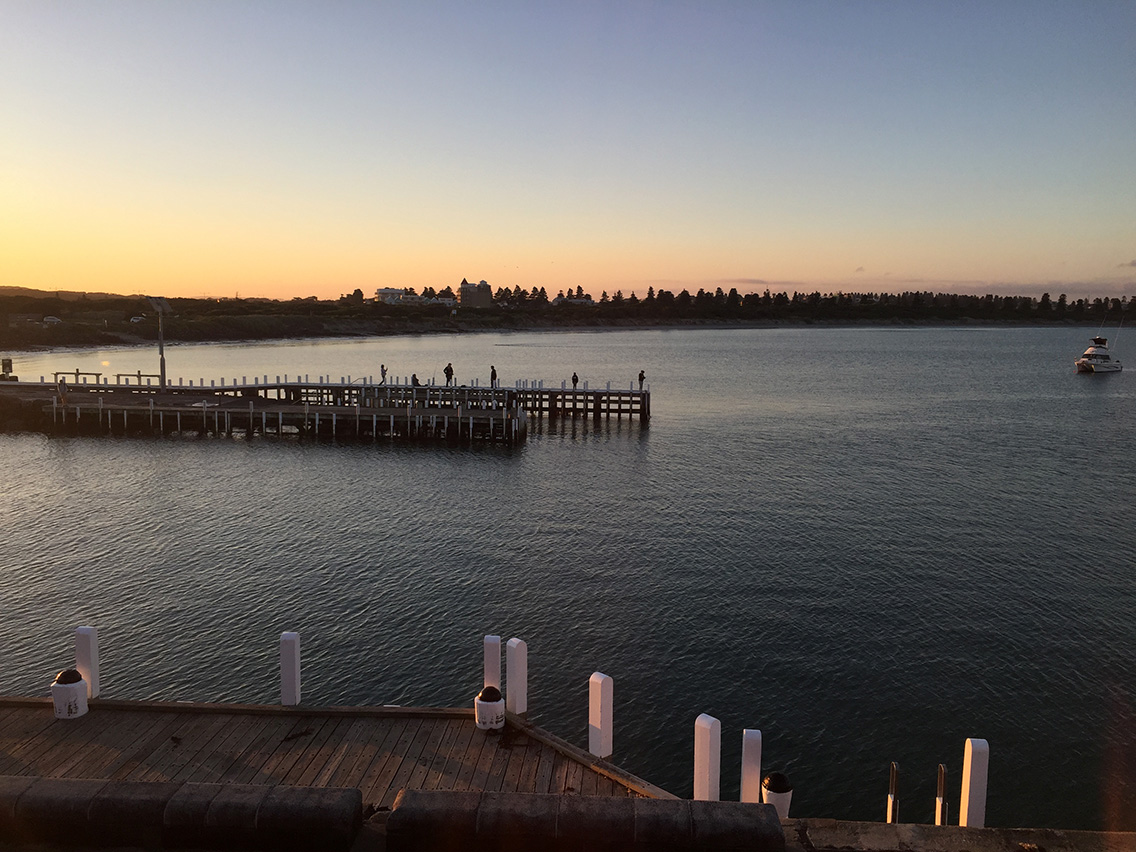
What was a highlight of your trip?
The story of Middle Island.
It’s a pity you can’t go out there anymore but there’s a good reason Middle Island is now just for the birds. Penguin birds to be precise.
Many years ago, we – and many others – paddled across the small stretch of water at Stingray Bay in Warrnambool, climbed the steep rocks onto the top of Middle Island and waited till the sun disappeared way over in the west. Soon the ground around us erupted in baby penguin chirps. The paths we walked on filled with mama and dada penguins returning from a hard day’s fish catching. Dinner time for hundreds of penguin families was extraordinary to witness. And it happened night after night, year after year.
But you can’t see this anymore. And that’s a good thing. One night the mainland foxes made the same journey we did, and extended the dinner date well beyond its original intentions. Then came Oddball, the miraculous Maremma dog and his mates that kept the foxes away. Now Middle Island is off limits for anything foreign, including humans, except on specially arranged ranger tours. Just like it was for years and years, the island is now for the birds – a penguin sanctuary that is, despite a few setbacks, experiencing a healthy population rise since the dark days of the fox visits.
Sometimes the best views of a landmark are seen a few steps back – think Uluru, MCG, Eiffel Tower, the Statue of Liberty. Step back and enjoy the wider view. And so it is now for visitors to Warrnambool. You can still can get a good view of Middle Island from the shore, with walking paths and a roadway allowing you to take it all in. It’s not as popular with the hordes as the better known whale viewpoints but can be just as spectacular.
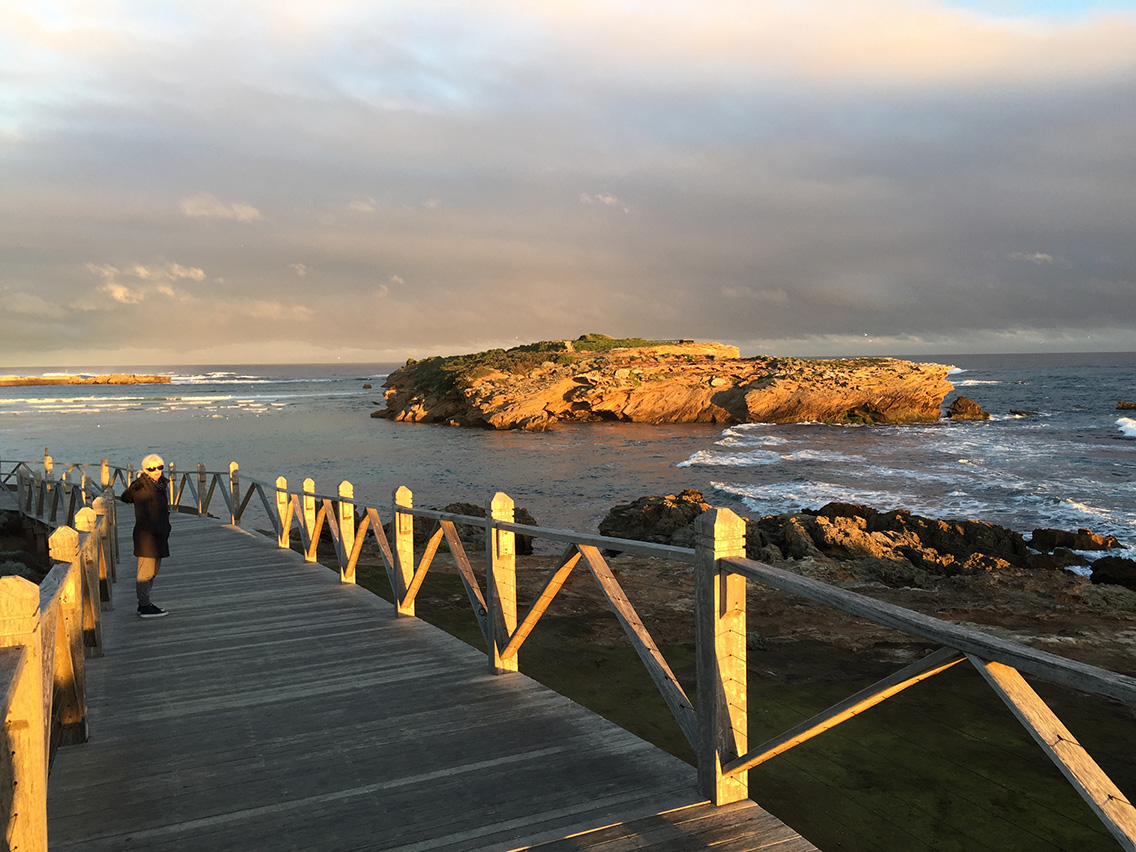
Do you have any tips for people thinking of travelling here?
The walking paths all around this part of the coast draw you out of the car. The beach track from the Breakwater to the Hopkins River mouth is paved and gentle, while in the opposite direction the dirt track to Thunder Point and beyond is slightly more rugged. The relatively new trail to Port Fairy is a full day return trip on the bike – you need to factor in eating and shopping in Port Fairy, as well as the high likelihood of sun, rain, and the infamous late afternoon south-westerly gale. And flies. Lots of flies.
What did you least like about your trip?
The old-style town centre is a great place to shop and eat but the parking meters are a turn-off during business hours. There’s no wonder the two shopping malls on the fringe are thriving.
What were the locals like?
Like many regional towns, Warrnambool has had many lives over the years. Timber, sealing and whaling are long gone but the farming and dairy influence is still strong. Deakin University brings in many international students and that has added a distinct flavour to the town. Tourism is where the real growth now lies and the town has leapt to the task in recent years. The main restaurant strip in Liebig St now has good food choices across every conceivable cuisine, so much so that the food district has now spread well into surrounding CBD streets and down to the waterfront. The options are extensive.
What was the food like?
Here are some good eating options:
Bojangles – classic Italian fare and new menus
Simons on the Waterfront – spectacular surf views
The Warrnambool Hotel – quality pub grub
Standard Dave – New hipster bar with great food
Pavilion – breakfast and café culture and sunrise views
Flying Horse Brewery – fine beers on the fringe of town
Kermonds – Terrific take-away classic burgers
East Warrnambool Fish ‘n Chips – cooked just as they should
Would you recommend others travel here?
Warrnambool is just far enough away from Melbourne to make it difficult for a weekend getaway, but perfect for a three-night stay or longer. In summer, it attracts people from all over the Western Districts and the Mallee.
Warrnambool is 3.5-4 hours drive from Melbourne, via Geelong and then along with the Princes or Hamilton Highway. Or go the longer way on the Great Ocean Road, which technically finishes just before Warrnambool. Or catch the train.
Join AllAbroad on Instagram, Twitter or Facebook for more travel inspiration.
Five places to see the Big 5 in Kenya
Let’s face it, if you’re thinking of going to Kenya you want to see wildlife. And not just any wildlife, you want to see the Big 5 – lions, rhinos, elephants, leopards and buffalo.
Seeing animals in the wild can be tough. You have to keep your eyes peeled and look into and through the trees. A good guide is paramount – they will spot wildlife way off in the distance, will have the contacts to ensure you get a heads up on great spottings around the park and will know animal movements and habits intimately giving them the foresight to sense where an animal might be hiding out.
We’ve been lucky enough to do a few safaris through Africa and on each occasion we’ve been blown away by the wildlife sightings we’ve experienced – from being chased by a rhino to sitting quietly for an hour (inside a van of course) amidst a pride of playful lions with not one, but two male adults.
Each time we’re overcome with the honour of the experience. There really is something magical in seeing animals in their own environment, being able to glimpse their world and watch them interact with each other in nature.
But as with most things in life, not all parks are created equal, some offer better viewing, some are better for a particular animal and some offer a better experience.
Which are our picks? We’re glad you asked!
Masai Mara/Serengeti
The Masai Mara is the best known of the national parks in Kenya – it is the big one, after all. It borders with the Serengeti in Tanzania. You’ll know it for the great wildebeest migration and it’s definitely a must see on any trip to Kenya. Try and time your visit to coincide with the wildebeest crossing and watch in awe as the zebras ‘guide’ the wildebeest through the plains and across the rivers, keeping an eye out for crocodiles and other dangers lurking on the riverbeds.
The Masai Mara is best for viewing all of the Big 5, we sat immersed with a lion pride for over an hour – with no one else around – watching them play, feed, fight and have sex. We also got to see a standoff between a lion and an elephant and a cheetah take down an impala to feed her three cubs. Oh and we had our best leopard sighting ever, not one but two leopards – a mother and son – together.
You’ll also feel like your in the Lion King as you amble through the grounds – keep an eye out for Pride Rock…
Amboseli
Who doesn’t love elephants? And if you really want a great sighting head to Amboseli. We saw a mother and her two babies before we even got inside the grounds of this park. The open plains make spotting the elephants easier than some other parks and you’ll generally get up closer than you can in other reserves. The elephants walk between the vans, seemingly unperturbed by the visitors in their path. While you’re here you really should check out the views of Mt Kilimanjaro too. As the highest mountain in Africa it’s worth a look.
Mt Kenya
We’re cheating a little here because there are actually quite a few parks in this area – Sweetwaters, Il Ngwesi, Borana and Lewa This area is all about ecotourism. We had some of our best rhino sightings at Sweetwaters. At one point one of the rhinos, seemingly unhappy with the constant clicking of Ade’s camera, made like it was about to charge us to scare us off. Luckily our driver was quick with his foot on the accelerator and we kept a slightly greater distance after that.
The parks here also tend to have fewer tourists, you can experience amazing sightings without seeing another van all day. Oh, and if you do stay at Sweetwaters, make sure you check out the chimpanzee sanctuary where you can do your bit for wildlife and adopt a chimp for the year.
If you want jaw-droppingly beautiful views, head over to Il Ngwesi. There’s a reason Prince William and Kate Middleton stayed here. As well as helping train the local community in tourism and hospitality the lodge sits on the edge of a hill and has amazing views over the Il Ngwesi conservancy below.
Lake Nakaru
One of my favourite animals is the giraffe and while it’s not one of the big five it’s worth coming to Lake Nakaru to see the endangered Rothschild Giraffe. You’ll also get great sightings of rhino here. We saw two rhinos having sex in this park – yes, we never thought we’d see rhino porn either. We also saw baby rhino and families of rhinos.
The real beauty of Lake Nakaru though has to be the ribbon of pink flamingos lining the shores of the Lake. The contrast between the elegance of the flamingos and the rugged prehistoric brutish force of the rhinos is stark. It provides an experience unlike any other national park.
Lake Nakaru is also meant to be a great place to see leopards, unfortunately we weren’t lucky enough to see any in Lake Nakaru, not one (but that’s part of the challenge of wildlife viewing).
Samburu
This is one of the best locations for big cat viewing, including leopards. You can also see elephants and many other interesting wildlife in Samburu. The landscape is slightly different to that in the other parks – it’s more scrubland and arid less open plains which can make wildlife viewing more difficult but it is great to see the different kinds of landscape scattered throughout Kenya.
We saw our first leopard here, so it has a special place in our hearts…
Check out our image galleries of the Masai Mara and Kenya for more wildlife photography.
Been to Kenya? Which parks are your favourite for wildlife viewing?
Join AllAbroad on Instagram, Twitter and Facebook for more travel inspiration.
Pandas, palaces and Great walls in Beijing
Shh, don’t tell anyone, but despite hosting tours, Ade and I have barely actually ever been on a tour ourselves. Unless you count that one mini tour with three other people through Tanzania. Other than that, nothing.
And so when we saw a great deal on a tour to China we thought this was it, let’s try our first large scale, full-blown tour as guests, no responsibility. We can just sit back and let someone else do all the work. But then of course, Ade couldn’t go, so I dragged along my sister, Julie, instead, and that’s how I found myself in a group of nearly 50 adults traipsing through the sites of China.
Our first stop was Beijing. It was large, overcrowded and foggy, but oh so interesting. We wandered through Tiananmen Square and through the imposing front entrance into the grounds of the Forbidden City. The Forbidden City served as the Imperial Palace for the Emperors during the Ming and Qing Dynasties. It is big, according to TravelChinaguide.com it is the largest palace complex in the world spanning almost 183 acres. We didn’t walk through all the rooms – there are 8700 afterall, it would take us weeks to get through all those rooms and there was so much more to see.
Our next stop was the Temple of Heaven. The Temple was used by the Emperors of the Ming and Qing Dynasties for annual prayer ceremonies seeking a good harvest. It is a beautiful, peaceful site. Walking into the temple grounds, along a beautifully painted, covered pathway (don’t forget to look up!), we passed by many locals playing board games, chatting, knitting or just sitting in quiet reflection. The Temple is still a place of gathering.
After visiting the temple and photographing it from every possible angle, we walked out, through the park-like grounds where our guide pointed out an even larger gathering of locals.
“It’s a wedding market,” she told us. “Parents come here with photos of their unmarried children and try to arrange matches.”
But of course the real highlight of China is a trip to the Great Wall. It is every bit as impressive as you expect it to be, and a lot tougher to climb. Yes, it’s packed with tourists, especially if you visit close to Beijing, but if you climb higher you can find some quiet spots, perfect to contemplate just how they built this amazing structure. And don’t worry, there are shops along the way so you can buy a drink – even a beer if you need one!
In total, the wall is said to be 21,134 km, stretching from Dandong in the East to Lop Lake in the West and roughly follows the arc of China’s border with Mongolia.
You’ve seen it thousands of times in photos, but nothing ever quite compares with seeing it in person. The wall represents the force, the mite of China as a nation, and the sheer determination and strength of those who imagined, designed and finally built it.
From walls to wildlife, a quick stop at Beijing Zoo gave us a chance to get close, though not too close(!) to the beautiful locals – the pandas. Most of our wildlife viewing is done in the wild, so I had mixed views about seeing the pandas in the zoo. They are beautiful, amazing animals and I’m glad I got to see them. But each of the pandas we saw, all in separate enclosures, had a sadness about them. But then, I’d probably look sad too if my house was surrounded by people all trying to photograph me!
And then there was the Summer Palace. The Palace, listed on the UNESCO World Heritage list in 1998, is 2.9 kilometres of gardens, lakes and palaces. There is so much to see here you could easily spend a day, from traversing the lakes on boats, to wandering through the grounds or the palace buildings. The site dates back to the Jin Dynasty in 1153, today it is a tranquil site for locals and tourists alike.
We always love to see local villages when we travel, to see how the locals actually live, so a stop to Hutong Village was a must (fortunately it was included as an extra on our tour). It didn’t disappoint.
We wandered along the shopping strip, resisted the temptation to stop and buy in every shop and instead marvelled over the architecture and the uniqueness of the buildings. We took a slow walk into the nearby village and stopped in one of the homes to learn about their way of life.
After a short briefing and walk through the home itself, we grabbed a rickshaw and sped through the streets of Hutong. And I mean sped. Our driver acted like we were a part of the Amazing Race, whizzing through streets, passing other drivers and pointing out the highlights along the way. Julie and I laughed, only encouraging him to go faster and faster.
And then in stark contrast our driver dropped us off in the central Beijing mall and gave us time to shop. The Mall – the famous Wangfujing is one of China’s most famous shopping strips. It was modern, it was bright, we could have been anywhere in the world, but we did pick up some good bargains. Just don’t miss the market of all things edible…
Fast Facts
We stayed at the Chunhuiyuan Hot Springs Holiday Resort.
We were here for three nights.
Was it long enough? You rarely get long enough in any one place on an organised tour, and there is always more to see. I could have spent more time at the Great Wall and at the Summer Palace just soaking up the atmosphere. But, overall, I was happy with the time we spent in Beijing.
Highlights: Walking the Great Wall, wandering through the streets of Hutong Village, the grounds of the Summer Palace.
Join AllAbroad on Instagram, Facebook and Twitter for more travel inspiration.
Five awesome things to do in Dubrovnik (Beyond a Game of Thrones tour)
Whether or not you’ve watched Game of Thrones, you’ve no doubt seen images of Dubrovnik and it’s impressive wall. A city contained within a giant, thick beast of a wall set on the beautiful bright blue Adriatic Sea – it’s every bit as magical as it looks in the photos. And even if you’re not actually into Game of Thrones (disclaimer: Ade loves the show, I can take it or leave it) this city is sure to charm you.
Yes it’s packed with heaps of tourists (ships coming in here regularly depositing hundreds of extra tourists daily) and everything about the city is geared toward attracting the attention of tourists, but there’s a reason why so many people stop here, it’s beautiful. So to help get you started, here are five experiences in Dubrovnik well worth trying – not a Game of Thrones tour in site (unless you include the tour groups you’ll bump into along the way).
Walk the walls
The walls surrounding Dubrovnik are big. Built in the 12-17th century, the walls are considered to be among the most impressive fortifications in the Middle Ages and it’s not hard to see why. Apparently, not just imposing to look at, the walls were never breached by hostile enemies, so they obviously did their job well! You’ll walk through them when you enter the city, and you’ll get an idea of the foreboding nature of this protective structure.
The width, the mite, the sheer impenetrability of the wall is breathtaking, but if you want to really take in the city and get a sense of the scope of the walls, walk around them. The walls are about 1940 metres long and 25 metres high at the highest point. In some areas, the walls are as thick as 12 metres wide. It is an intact, uninterrupted set of walls with various sets of steps up from the town along the way leading to a single walkway across the top. It’s not an easy walk, steep steps at the start, bustling tourists all keen for that perfect shot and searing sun (if you’re there in summer) but it will give you amazing views over the town centre, the sea and the surrounding area.
Much of Dubrovnik was damaged from heavy shelling in 1991 in the aftermath of the dismantling of Yugoslavia and from the walls you can see which of the buildings survived, which have been rebuilt and which are still in a state of disrepair. Be sure to stop in at the Minceta Tower and look through the various ‘windows’ and turrets along the way – you’ll never tire of seeing those ocean views.
Oh, and don’t worry – there is a café part way along in case you get thirsty! Or, just fill up your water bottle at the free water fountains near Pile Gate.
Kayak around the wall
Once you’ve walked the walls and wandered the laneways and boulevards inside the main city, get out onto the water. There are a heap of tour companies offering to take you out in kayaks – you’ll get accosted by tour companies every time you walk through the gates. Pick one, or head to the tourist shop just near Pile Gate to find a program that’s right for you.
We went kayaking with one of the local groups, it was awesome. The water really is that azure blue you see in the photos and seeing the limestone walls and fortifications rise up out of the water is quite an imposing site. You’ll also get to circumnavigate Lokrum island, swim in a cave (and jump off the walls if you’re brave enough) and of course give your upper body a work out – just to balance out the legwork you’ve been doing with all that walking.

Get outside the wall
There is so much to see inside and on the wall that it would be easy to just stay there, but then, you’ll miss out on so much. The kayaking will give you a taste of what else there is to see and if you look up while out on the water, or down while you’re walking along the wall, you’ll see a quaint little bar nestled just outside the walls, high above the water. The bar is Buza Bar, one of the most famous in Dubrovnik. It will no doubt be packed, but still worth a stop. You’ll need to walk in the direction of the water while inside the walls and then once you hit the wall lining the water’s edge, follow it until you reach a small door. You’ll be ready for a beer when you get there.
For amazing views over the old town, head through Ploce Gate, stop and take a look back at this amazing gate and marvel again at the sheer mite of this fortification, then follow the wall around until you get to the main gate Pile Gate. You’ll see the original moat and the full extent of the series of walls that protected the city inside. Marvel over Pile gate for a moment – it’s even more impressive than Ploce and then turn around, with your back to the old city and follow the road until you get to Fort Lovrijenac or St Lawrence’s Fortress. If the town hasn’t already done so, the fortress here will make you feel like you’ve stepped back into the middle ages (you’re likely to bump into a Game of Thrones tour group here). It’s not a big castle so you won’t need long here, but you will get amazing views over the city, the wall, and it’s main gate.
Once you’ve seen enough, head back out and make your way to nearby Sulic Beach where you’ll find a couple of bars hugging the cliffs overlooking the beach, including Dodo Bar – a little gem with swings instead of barstools at the bar, guaranteed to bring out the kid in you.
Travel to Lokrum island
You’ve kayaked around it and no doubt that experience left you with a desire to see more of Lokrum Island, so take the short ferry ride across to the island spend a day wandering over the various ruins, checking out the old monastery and exploring the rock pools. Make sure you take your bathers, there are so many places to swim here and with all the walking, you’ll definitely feel like taking a dip or two around the island.
There are cafes, restaurants and bars to keep you watered and fed throughout the day, as well as some wandering lyrebirds to entertain you. Bliss.
Swim at a local beach
Ok, we’re from Australia, we expect our beaches to be all white sand and soft grains beneath our feet, so I was surprised to say the least by what passes as a beach in Dubrovnik. Giant rocks or pebbles and concrete paths nestled between the walls and the water. Just find a flat spot and lay out your towel (or sarong). There are generally steps down into the water, or a clear path where the rocks are a little easier to traverse –be careful, they’ll be slippery and who knows what wildlife has made it’s home there! Watch what the locals do and follow in their footsteps.

There are beaches all around the main town of Dubrovnik, our favourite was out past the boat terminal and jetty, just follow the wall until you see signs for ‘Beach’. If you’re not sure where to swim, just keep an eye out for a local – you’ll see them swimming just about everywhere!
Fast Facts
We stayed at an AirBnB just outside the main town. It had amazing views of the town, but was a long steep walk.
We were here for four nights.
Was it long enough? It was the perfect amount of time to explore Dubrovnik, we felt like we really got to explore the town centre and surrounds and immerse ourselves in the city. We didn’t get to do any day trips from the town, though there are lots you could do, we preferred to stay and really soak in Dubrovnik.
Highlights: Kayaking through the beautiful blue waters, sun downers on our balcony overlooking the beautiful old town, swimming along the walls in that beautiful clear blue water.
Been to Croatia? What was our favourite experience? Let us know below.
Join Allabroad on Instagram, Twitter or Facebook for more travel inspiration.
On safari at the jaw-droppingly beautiful Il Ngwesi
I had been told by all in the Two’s a Crowd office and Brooke from RAW Africa Ecotours, how jaw-droppingly stunning Il’ Ngwesi community lodge was, but it is one of those situations where words just don’t do it justice.
Afterall it was where Prince William and Kate Middleton stayed on a previous trip to Kenya, and after taking in the views I can see why. Being a community-owned lodge, profits raised contribute to the local Masai community as well as wildlife conservation. The lodge also trains locals from all over Kenya in tourism and hospitality.
The lodge is built on a hill and has commanding views of the valley below, including a water hole that attracts thirsty four-legged and feathered visitors all day. In fact it’s possible to sit just about anywhere in the lodge and view wildlife, even the pool. Life does not get better than this. The five-star luxury of the lodge was a great way to cap off four nights of camping.
Our daily activities consisted of game drives through the conservancy, a sunrise walk to get close to white rhinos, brought to the conservancy as part of a breeding and conservation program, and a village visit that gave us a chilled chance to hang out with the local Masai. It was a very different experience from other village visits I had done in Kenya and Tanzania, that were also enjoyable but very touristy and hectic. We were the only six guests in the village as Il N’gwesi lodge is the only lodge in the conservancy.
We enjoyed sundowner drinks under the setting sun and did plenty of lounging around the pool. The perfect place to watch wildlife and sip a cold beer. It really was a slice of heaven and I can’t wait to go back.
Fast Facts.
We stayed at the Il Ngwesi Lodge.
We were here for two nights.
Was it long enough? Nowhere near long enough. I would have loved at least five nights here. Seriously, no matter how long I stayed there was always going to be a considerable degree of bottom lip quivering at leaving.
Highlights: Meeting local Masai during the village visit and our afternoon game drives followed by sundowner drinks.
Our Guide for this adventure was Jaros from Raw Africa EcoTours.
*This was part of a trip I hosted with Australian solo tour company Two’s a Crowd.
Join us on Instagram, Facebook and Twitter for more travel inspiration.
Moonscapes and mayhem in La Paz
We’re swinging in a cable car high above La Paz, one of the highest cities in the world. It’s an awesome feeling. Below us we can see the curving roads, the cramped buildings, some perched precariously on the edge of cliffs, and the surrounding arid craggy landscape.
At 3650 metres above sea level, La Paz is high, very high. The city sits in the caldera of a volcano giving it an otherworldly feel, a crammed city of more than 215,000 people. It’s chaotic, it’s intriguing, it’s interesting, it’s quite simply awesome!
Far from being a tourist attraction, the cable cars have been designed to move people around the city, so for about 80c, locals can travel anywhere in the city centre above the mayhem of the traffic below. There are currently four separate cable car lines crisscrossing the city skyline, with plans for more.
I’m travelling as a host with Two’s A Crowd and we’ve already travelled through Peru, so we’re used to high altitude, but we’re not quite used to anything like this.
We walked through Bolivia’s border with Peru after a couple of days on the serene waters of Lake Titicaca. Our guide, Leo, had warned us there might be huge queues to get into Bolivia – expect to wait for hours, he had said. Fortunately, when we get there, there’s not a queue in sight, so after changing our Peruvian Sols for Bolivian Boliviano (yes, that’s what the local currency is called), we make our way through customs and step foot in Bolivia.
Our new bus is waiting for us – a large luxury coach for 12 of us; sadly it doesn’t want to move so we wait while our guide organises two local taxis to take us to the ruins at Tiahuanaco, a Pre-Incan site that dates back to 300AD. Not far from the site is a small museum that helps give context to the ruins. Not far from the main temple site is Pumapunku. If you look closely at the ruins left behind here, you’ll notice perfectly cut markings and holes. Our guide points out that some people believe humans did not create these markings, that perhaps aliens had some part in it…
Regardless of whether you believe it or have an interest in aliens, it’s an interesting look at civilisation and the history of the world.
The following day started with our cable car ride and then, just in case we hadn’t had enough of heights, we ventured up to the lookout for a stationary look out over La Paz. It’s a sprawling city, and from this vantage point you can take in the full vista of the caldera with the surrounding crags.
But seeing the landscape from a lookout, is nothing compared to being in amongst it, so we load into a bus and venture out to the Valle de la Luna (Valley of the Moon,) so called because Neil Armstrong apparently visited the site and said it looks just like the moon. I always imagined the moon to be flat, this definitely isn’t, but it has the kind of vegetation I imagine you might find on the moon – nothing.
Valley of the Moon is about 40 minutes drive from the centre of La Paz. Aside from the odd cactus plant, the site is barren. Craggy mounds of earth rise up like termite mounds out of the earth, but this is all naturally formed. Wooden platforms make it easy to meander through the site.
Back in town, and we make a quick stop to taste the local delicacy saltenas – somewhat similar to a pasty, though smaller and tastier, it’s a pastry filled with different types of meats and vegetables.

Then we’re off to the witches market. I’m a little excited about this stop, and very intrigued. The market isn’t actually a market in the conventional sense, at least not anymore. It’s actually a series of shops that sell all kinds of lotions, potions and amulets. You can even find llama foetuses here…
But if you’re not into that kind of thing, the people watching here is amazing; just don’t be fooled by the women in local costume. You may think they are saving money by choosing traditional dress over modern clothes. They’re not. Our guide tells us the outfits can cost up to $5000 including the hats and all the skirts!
Fast Facts
We stayed at the Rosario de la Paz Hotel.
We were here for two nights.
Was it long enough? We crammed a lot in the time we were here, but there is definitely more I’d like to see in Bolivia!
Highlights: Don’t miss the Valley of the Moon and the witches markets, oh and of course those cable cars!
*This was part of a trip I hosted with Australian solo tour company Two’s a Crowd.
Join AllAbroad on Instagram, Facebook and Twitter for more travel inspiration.
The astonishing beauty of Iceland
Ok, we admit it, Iceland is high on our Bucketlist right now! So when we came across a fellow wanderluster who had actually been, we just had to get him to write our next You’ve Been Where post. Thomas Pamon is a seasoned traveller, but Iceland stands out as a favourite – and it’s not hard to see why. We challenge you not to want to go after reading this post.
Who are you and what do you do for a living?
Hi, I am Tom and I am currently studying for my master’s degree reading Social and Organisational Psychology at the University of Exeter. Alongside my degree, I am a part-time waiter (to pay for my travels).
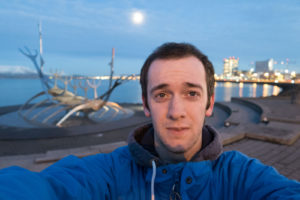
Where is home?
I am currently living in Exeter, Devon, however I grew up in Derby, which is in the middle of England.
Where have you been? When did you go?
During exam season, at the beginning of January 17, I visited Iceland for five days to get away from the stress.
Who did you travel with?
On this particular trip, I travelled by myself.
What were the highlights?
For me the highlights of this trip was exploring the south coast especially around Vik and Reynisfjara Beach. The natural formation of this island is astonishing and I highly recommended exploring this area.
What did you least like about your trip?
For me (as a backpacker) unfortunately the rumours are true, this place is very expensive! Be aware Iceland is not known for its food and you can pay a pretty price for mediocre food and service. This applies for shopping in the supermarkets as well. But this was not enough to put me off wanting to go back.
Do you have any funny stories from your travels?
I have from other travels, but from this particular trip I would have to recommend the Game of Thrones tour run by ‘GrayLine’ our tour guide was an extra from the HBO TV series and made the day most memorable and humorous. This trip is a must-do if you enjoy the series and I hope he gets recognition for his efforts in providing an amazing experience to all his guests. (p.s. he runs the tour as if he is still on set, so if you don’t like “banterous” swearing and anger, this may not be for you)
What were the locals like?
The locals were very friendly, something Iceland is known for. Interestingly, the number of tourists exceeds the number of Icelandic folk at any given point. To put this in perspective there are not many Icelandic people around.
What was the food like?
Food comes at a price and is not my greatest memory of Iceland. I took snacks over knowing the prices of food and also budgeted by using the supermarket and preparing my food in the hostel. I did eat out one night and for one person with a drink and a burger (if I remember correctly) the price was around £28.
Did you learn anything about yourself or the world on this trip.
I have travelled to a fair number of places in the world and Iceland truly is one of the most unique and accessible places by far. They now operate a budget airline WOWair along with Icelandic Air who have frequent flights from England and good connections to America. The scenery here is breathtaking (so wrap up warm to get out and see it!).
Would you recommend others travel here?
I would highly recommend visiting Iceland! Five days was not long enough to explore all the places I wanted to. I feel this is a trip for families with older children who would appreciate the views and also for couples and solo travellers. There’s not really much to do with younger kids and remember (in January) they only have four to five hours of sunlight which can get confusing so use your time wisely.
Do you have any tips for people thinking of travelling here?
It can be done on a budget if you are a super-saver, if not save a fair amount of money and then some more. When you arrive, you realise there is so much more to do and see and that it is completely different from the landscape most tourists visit. Get off the beaten tracks (but stay on the roads in the car as it’s illegal to go off-roading) the natural beauty of this place is all around, although I went on my tours using travel companies, the roads were quiet and well sign-posted and if you are comfortable driving in snow I would recommend hiring a car so you can stop on the side of the road to take in the amazing views.
Been somewhere recently and want to share it with the AllAbroad travel community? We’d love to hear about your travels, contact us at allabroadau(@)gmail.com
Join AllAbroad on Instagram, Facebook and Twitter for more travel inspiration.
